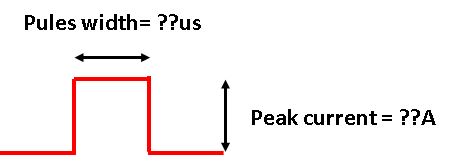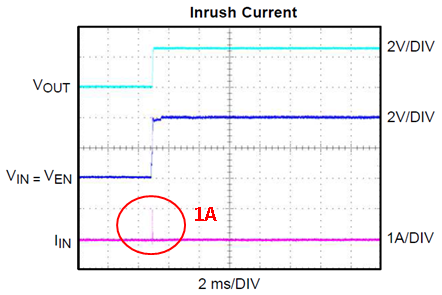Hi Team,
Our customer are evaluating LP5907 at the following conditions.
[condition]
-Vin=5.5V (or 5.0V)
-Vout=4.5V
-Iout=250mA
-Cin=47uF
-Cout=200uF
In this cases, the inrush current is large because Cout is large.
Therefore they would like to know about an acceptable inrush current.
Could you please let us know the following value?
- Peak current value (??A)
- Pulse width (??us)
Regards,
Kanemaru





